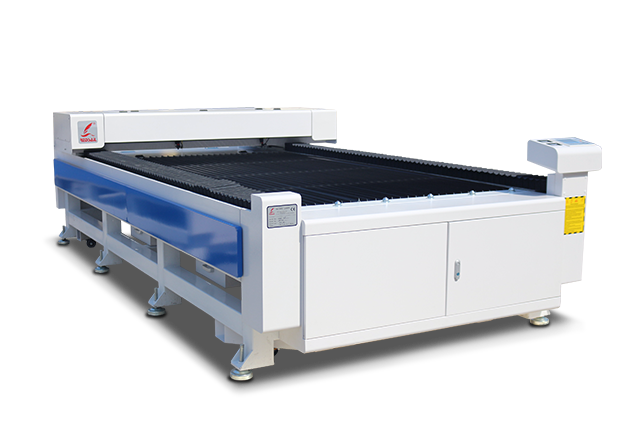Laser cutting generally has the following main purposes:
1) Laser vaporization cutting uses a high-energy density laser beam to heat the workpiece, rapidly increasing the temperature and reaching the boiling point of the material in a very short time. The material begins to evaporate, forming steam. These vapors are ejected at high speeds, while forming notches in the material. The heat of vaporization of materials is generally large, so laser vaporization cutting requires a higher power and power density. Laser vaporization cutting is commonly used for cutting extremely thin metal and non-metallic materials such as paper, cloth, wood, plastic, and rubber.

2) When the laser is fused, the metal material is melted by laser heating, and then non oxidizing gases (Ar, He, N, etc.) are sprayed out through a nozzle coaxial with the beam. The liquid metal is expelled by the strong pressure of the gas, Make a cut. Laser melting cutting does not require complete vaporization of metals, and the required energy is only 1/10 of that of vaporization cutting. Laser melting cutting is mainly used for cutting materials that are not easily oxidized or active metals, such as stainless steel, titanium, aluminum, and their alloys.
3) The principle of laser oxygen cutting is similar to that of oxygen acetylene cutting. It uses laser as a preheating heat source and active gases such as oxygen as cutting gases. On the one hand, the blown gas undergoes an oxidation reaction with the cutting metal, releasing a large amount of oxidation heat; On the other hand, molten oxides and melts are blown out of the reaction zone, forming notches in the metal. Due to the large amount of heat generated by the oxidation reaction during the cutting process, the energy required for laser oxygen cutting is only half of that for melt cutting, and the cutting speed is much higher than that of laser steam cutting and melt cutting. Laser oxygen cutting is mainly used for easily oxidizable metal materials such as carbon steel, titanium steel, and heat treated steel.
4) Laser scribing and controllable fracture laser scribing use high-energy density lasers to scan the surface of brittle materials, causing them to evaporate into small grooves and then apply a certain amount of pressure, causing brittle materials to crack along the small grooves. Open. The lasers used for laser scribing are generally Q-switched lasers and CO2 lasers. Controlled fracture is to use the steep temperature distribution generated by laser slotting to generate local thermal stress in brittle materials, so that materials break along small grooves.




